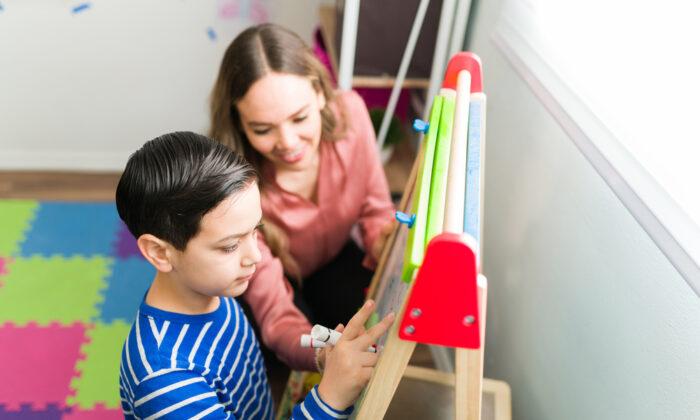Third grade–we all remember it–some memories are good, others, not so much, but one thing that many of us remember is math. Already a huge transitional grade, it’s also a school year in which many new concepts are introduced, and no subject introduces more new concepts than math.
As a third-grade teacher for 10 years, I saw students respond in many unique and interesting ways to this subject and its concepts. Yet no concept evoked more self-doubt, fear, and angst in students, and sometimes parents, than division. In a year already filled with many new experiences, this concept, with its many steps and many opportunities for mistakes, often made students want to give up before they even started.
One year there was a young lady in my class who was very bright but often doubted herself. On the day I first introduced division to the class, you could see the anxiety on the students’ faces, but for one little girl, tears began to flow. She looked at me brokenhearted and simply said, “I can’t do it.” So after I got the class started, I called her to my desk, and we walked through the problems step-by-step. At the end of each problem, she would give me the same answer, “I just don’t understand. I don’t think I can do this.”
As the days turned into weeks and weeks turn into months, I wondered when she would believe in herself enough to do it. Every day we would get out our math books, and as soon as she saw division on the page, tears began to flow. I would call her to my desk and calmly walk her through the problem, helping her see that she could do it. Most days, my help involved nothing more than simply saying, “What do we do next? What do we do next?” Every time, she was able to answer my question and do the problem.
Finally, one day, I looked at her after we had done three problems, and I said, “Tell me what I said as I helped you?” She thought back over our interaction, all of a sudden, the lightbulb came on above her head. She looked at me and said, “All you said was ‘What do you do next?‘” I said, “Exactly. You did all the work. You know how to do this, but you’re just not sure of yourself. So here’s what I want you to do. First, look at this problem. I want you to go back to your seat, and every time you get nervous, hear my voice saying, ‘What do you do next?’”
With still a little hesitation, she looked at me, and I smiled and said, “I know you can do it.” She went back to her seat and carefully did the problem. As soon as she was done, she jumped out of her seat screaming, “I did it. I did it.” When she brought her paper to me, she certainly had. From that day forward, there were no more tears.
Honestly, parents, sometimes we are in the same place ourselves. There have been times when my daughter brought me math homework to get my help, and I didn’t even know where to begin (and I have a master’s degree). It’s not easy as a parent to sometimes admit that you’re not sure what to do, but there are days when I’ve had to.
Over the years, there were many stories like this. Early on in my teaching career, I would get frustrated, until I started to ask myself, “Why is the student reacting this way?” I realized that sometimes it was just overwhelming for them, they didn’t trust themselves, and didn’t realize that all along, they could do it. We, as a parent, can forget how daunting the learning experience can feel for our children.
Think of how you have felt at a new job. Were there days that just seemed like too much? Days where you felt like all you did was make mistakes? Imagine every day going to work and having your report corrected and being shown the mistakes you made and then having to come back and do it again and again.
Don’t get me wrong, this is necessary, and I’m not saying that students’ errors or ours shouldn’t be corrected. But any time you’re learning new information, there are going to be many mistakes, there’s going to be a lot of uncertainty, and it will be overwhelming. As adults, we just find better ways to hide it.
- Be patient and try to remember what it was like when you struggled in new situations.
- Talk to them about your own challenges and fears.
- Hold their hand and steady them until they feel like they can do it on their own.
- Let them know that mistakes are OK, and sometimes are necessary to the process.
- No matter how long it takes, never let them quit, and never give up on them.
- Finally, don’t be afraid to tell them you don’t know how to do something. When I did, I was surprised how much it helped them as they learned.





